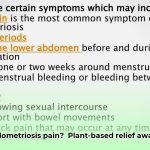Ever feel that nagging ache or low-level fatigue? It might stem from inflammation, and your diet plays a huge role. This article unpacks Dr. Weil’s anti-inflammatory food pyramid – a guide to eating for improved well-being. We’ll dissect each level, examining the science-backed food choices and areas needing further exploration. We’ll emphasize the importance of whole foods, common pitfalls, and how to tailor this plan to your body. Whether you’re health-conscious or just beginning, this provides tools for real change toward a healthier and happier you. For more on anti-inflammatory foods, check out this helpful resource: anti-inflammatory foods.
Understanding Inflammation and the Role of Diet
Inflammation is a natural bodily response, but chronic inflammation can contribute to various health issues. Dietary choices play a significant role in managing inflammation. Dr. Weil’s anti-inflammatory food pyramid serves as a guide, steering your food choices toward minimizing inflammation. View it as a roadmap, not a strict GPS, to better health.
Building a Foundation: The Importance of Whole Foods
This isn’t about restrictive dieting; it’s about fostering a healthier relationship with food. Dr. Weil’s pyramid helps choose foods naturally anti-inflammatory. The key lies in focusing on the pyramid’s largest sections, representing your foundational foods. Similar to a house needing a stable base, your body requires a constant supply of these powerful ingredients.
Exploring the Pyramid: Layer by Delicious Layer
The pyramid is more than just an image; it’s an approach to creating an anti-inflammatory diet. Here’s a breakdown of each level, from most abundant to those you consume sparingly:
-
The Base: Daily Essentials: This layer constitutes the bulk of your meals, encompassing fruits, vegetables, and whole grains. Think antioxidant-rich blueberries, nutrient-dense spinach, and sustained-energy brown rice. These are your inflammation fighters, with ample scientific evidence supporting their benefits for overall health and inflammation reduction. Aim for at least five servings of vegetables and four servings of fruit daily.
-
The Mainstays: Reliable Allies: This level includes legumes (beans, lentils, chickpeas), nuts, and seeds. These are excellent protein and fiber sources, while nuts and seeds offer healthy fats like beneficial omega-3s. Aim for 1-2 servings of legumes daily and a handful of nuts and seeds. Portion control is important due to their calorie density.
-
The Moderate Crew: Taming Healthy Fats: This layer introduces olive oil, avocados, and fatty fish (like salmon). Essential for various bodily functions, their higher calorie content necessitates moderation. Strong scientific backing supports their inclusion in a healthy diet, particularly those rich in omega-3 fatty acids. Focus on healthy unsaturated fats. Aim for 2-6 servings of fatty fish per week.
-
The “Less Is More” Group: Enjoy Sparingly: This top layer comprises red meat, refined carbohydrates (like white bread and pastries), and sugary drinks. These foods are often linked to increased inflammation. Occasional indulgence is acceptable for most, but routine consumption is not recommended. Consider these as occasional treats, not daily staples. Limit these foods as much as possible.
Scientific Insights: Validating the Food Pyramid
Considerable research supports numerous aspects of Dr. Weil’s pyramid, and some areas remain under active investigation.
Strong Evidence: The advantages of consuming ample fruits, vegetables, whole grains, legumes, and healthy fats (especially omega-3s), are heavily substantiated. Many spices, such as turmeric and ginger, also exhibit promising anti-inflammatory effects. Studies have shown that diets rich in these foods can significantly reduce inflammatory markers in the body.
Ongoing Research: The impact of specific foods like red wine, soy products, and even dairy remains a subject of ongoing debate. Some research indicates potential benefits, while other studies show less definitive results. Further research is necessary, and individual responses may significantly vary. This emphasizes the importance of personalized dietary approaches.
Personalizing Your Plan: Tailoring to Individual Needs
This isn’t a one-size-fits-all approach. Your body is unique, and so are your dietary needs. Food sensitivities, allergies, and underlying health conditions can all influence individual requirements. Consulting a registered dietitian or your doctor is important. They can assist in creating a personalized plan aligned with your specific needs and health goals. Listen to your body and adjust accordingly.
Your Action Plan: Implementing the Pyramid Effectively
Here’s a step-by-step guide to integrating the anti-inflammatory food pyramid into your lifestyle:
-
Boost the Base: Steadily increase your intake of fruits, vegetables, and whole grains by incorporating them into meals throughout the day.
-
Reduce Inflammatory Foods: Gradually reduce consumption of processed foods, sugary drinks, and refined carbohydrates. This doesn’t mandate complete elimination, but it encourages mindful choices.
-
Embrace Healthy Fats: Regularly add omega-3 fatty acid sources, like salmon, chia seeds, and walnuts, to your meals.
-
Partner with a Pro: Collaborate with a registered dietitian or healthcare professional to create a personalized plan tailored to your individual needs and health status. They can assist in navigating challenges and ensuring the best choices for your body.
Remember, this is a journey, not a race. Small, sustainable changes are more effective than drastic overhauls. Be patient, celebrate progress, and enjoy building a healthier, less inflamed you!
Key Personalization Aspects of Dr. Weil’s Anti-Inflammatory Food Pyramid
Key Takeaways:
- Prioritize fruits, vegetables, and whole grains for optimal nutrition.
- Reduce or eliminate processed foods, refined sugars, and excessive animal products to minimize inflammation.
- Consult with a doctor or healthcare professional before starting new supplements to ensure safety and efficacy.
- Incorporate healthy fats, lean proteins, and fiber into your diet for balanced nutrition.
- Focus on long-term lifestyle changes for sustained health benefits and reduced inflammation.
The Foundation: Dr. Weil’s Approach
Dr. Weil’s anti-inflammatory food pyramid serves as a flexible guide rather than a rigid diet. It emphasizes whole foods, minimizing processed items and excess sugars. But how can you make it your plan? That’s where personalization comes in. The pyramid acts as a starting point—a framework for you to adapt.
Level 1: The Daily Dose of Nutrients
This base layer is your daily essential, consisting of a variety of fruits and vegetables. Aim for a rainbow of colors, as each hue represents different phytonutrients—potent anti-inflammatory compounds. Think vibrant berries, leafy greens, and colorful peppers. But remember to tailor it to your unique needs. Are you allergic to certain fruits? Do you have digestive sensitivities? Adjust accordingly. Personalization starts with honest self-assessment! Consider adding specific anti-inflammatory vegetables and fruits, such as spinach, kale, blueberries, and strawberries.
Level 2: Building Blocks of Nutrients
Next comes the core – whole grains, beans, and lentils, providing sustained energy and fiber crucial for gut health, a major player in inflammation. However, not all grains are created equal. If you’re gluten-sensitive, opt for gluten-free choices like quinoa or rice. Similarly, if legumes cause gas, introduce them gradually. Personalization extends beyond what to eat; it also considers how your body responds. Experiment with different types of legumes to see which ones your body digests best.
Level 3: Incorporating Healthy Fats
This section highlights olive oil, avocados, nuts, and seeds, offering essential fatty acids crucial for cell function and inflammation reduction. But are you watching your cholesterol? Then moderation is key. Are you allergic to nuts? Then focus on avocados and seeds. A mindful approach to portion sizes and individual needs is crucial. Consider incorporating flaxseeds into your diet as a source of omega-3 fatty acids if you don’t consume fish.
Level 4: The Importance of Lean Protein
Lean protein sources, like fish, poultry, and beans, are vital for muscle building and overall health. However, consider your protein preferences and potential sensitivities. Are you vegetarian? Then rely more on plant-based proteins and legumes. Are you sensitive to poultry? Then focus on fish and beans. The important point is to make it work for you.
Level 5: Occasional Treats
This top layer acknowledges that life isn’t always about strict adherence. Occasionally enjoy dark chocolate (70% cacao or higher), red wine (in moderation), and even small amounts of natural sweeteners, but be aware because too much can counteract your efforts. Opt for small portions and savor each bite.
Level 6: Supplementation & Health Considerations
Dr. Weil’s pyramid suggests certain supplements, such as fish oil and Vitamin D, but these are decisions requiring consultation with your doctor. They are not a replacement for a balanced diet, instead filling potential gaps. Always seek professional advice before starting any supplementation. Get your vitamin D levels checked before supplementing, as deficiencies are common.
A Step-by-Step Guide to Personalization
- Self-Assessment: Note any allergies, sensitivities, or dietary preferences.
- Baseline Diet: Track your current eating habits to assess your starting point.
- Pyramid Adaptation: Gradually incorporate the pyramid’s principles, making adjustments based on your assessment.
- Monitoring: Pay close attention to how your body responds. Maintain a food journal to track any changes.
- Professional Guidance: Consult a registered dietitian or physician for personalized dietary advice.
Anti-Inflammatory Diet for Gut Health and Improved Digestion
Key Takeaways:
*
- Plant-based Diet Colitis Remission: Success Stories - December 18, 2025
- Plant Based Diet Breast Cancer: Research-Based Benefits - December 16, 2025
- Plant-Based Diet Ulcerative Colitis Remission: Proven Benefits - December 15, 2025










